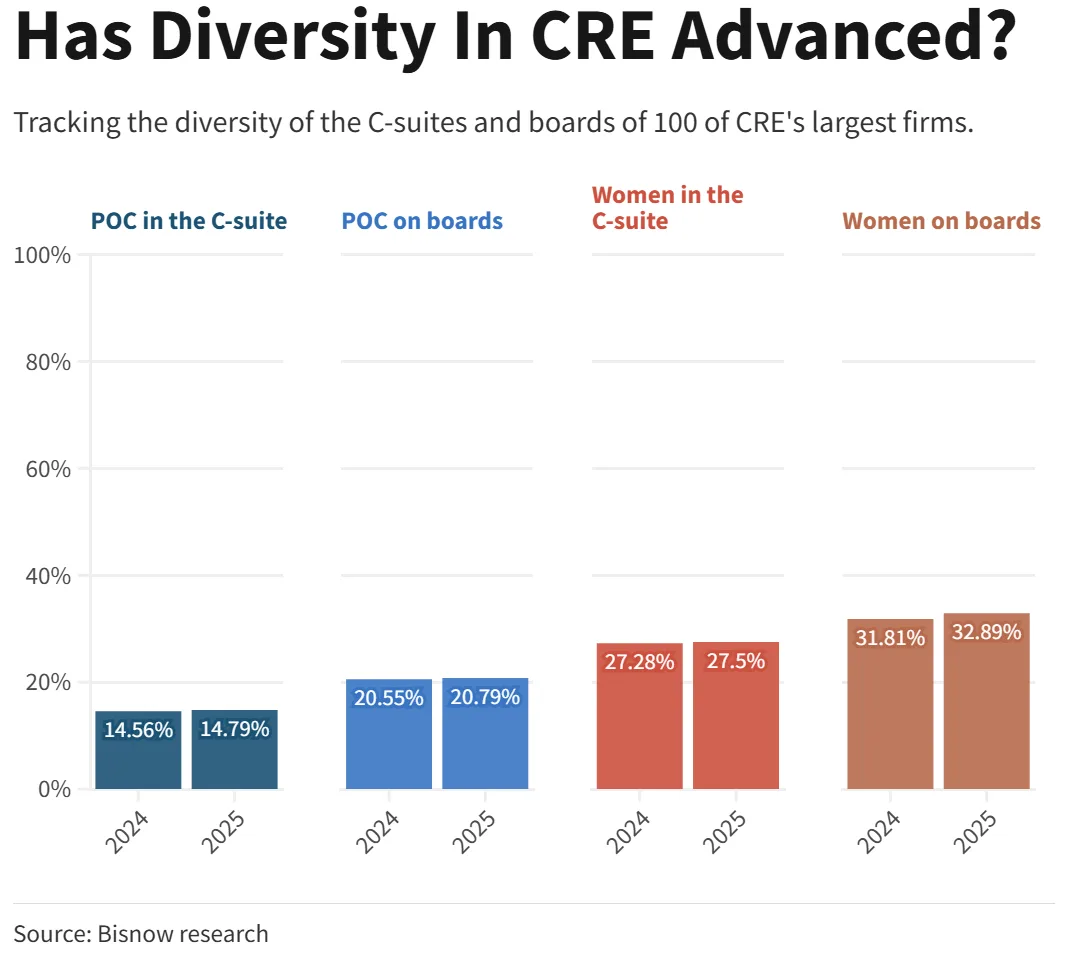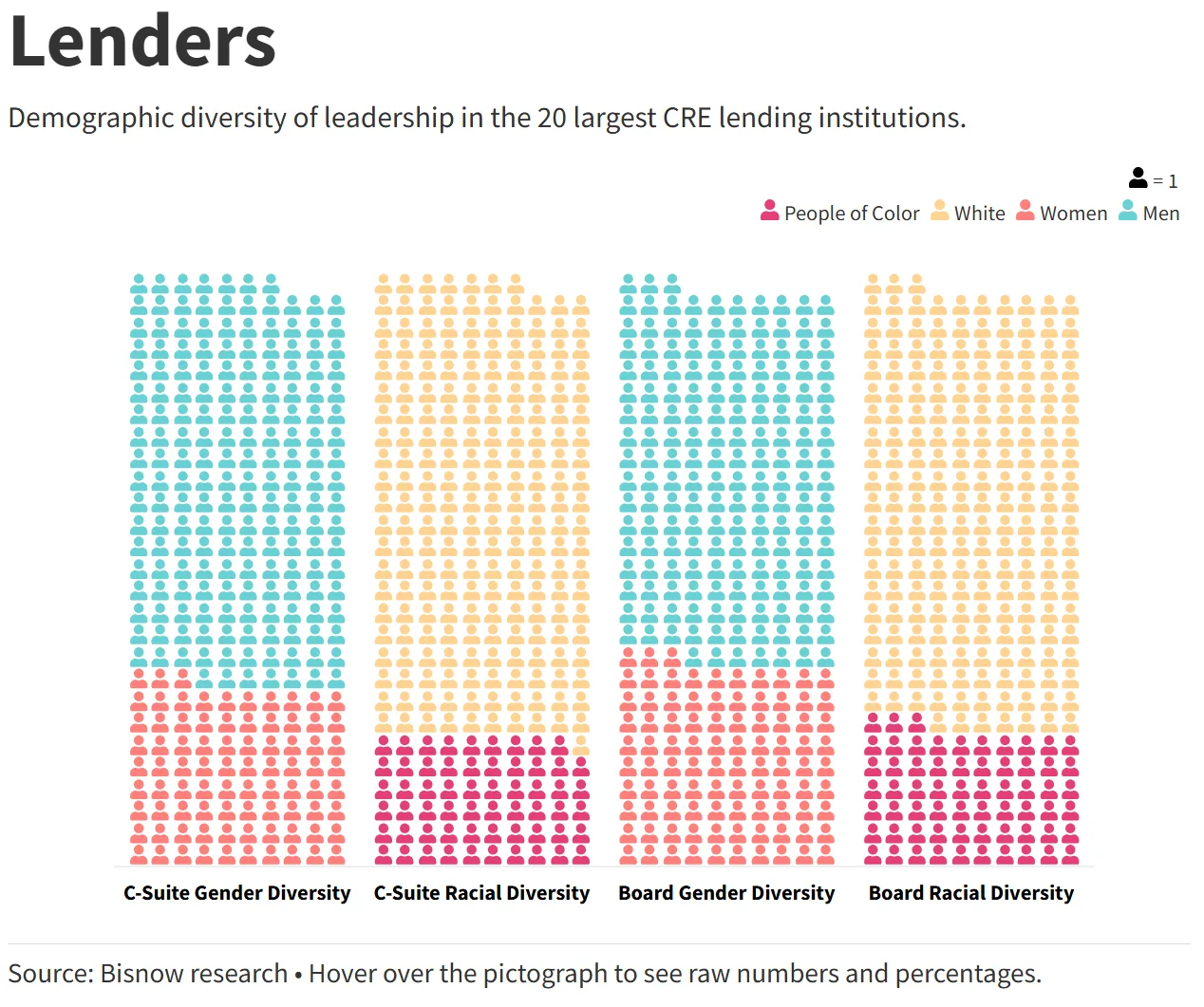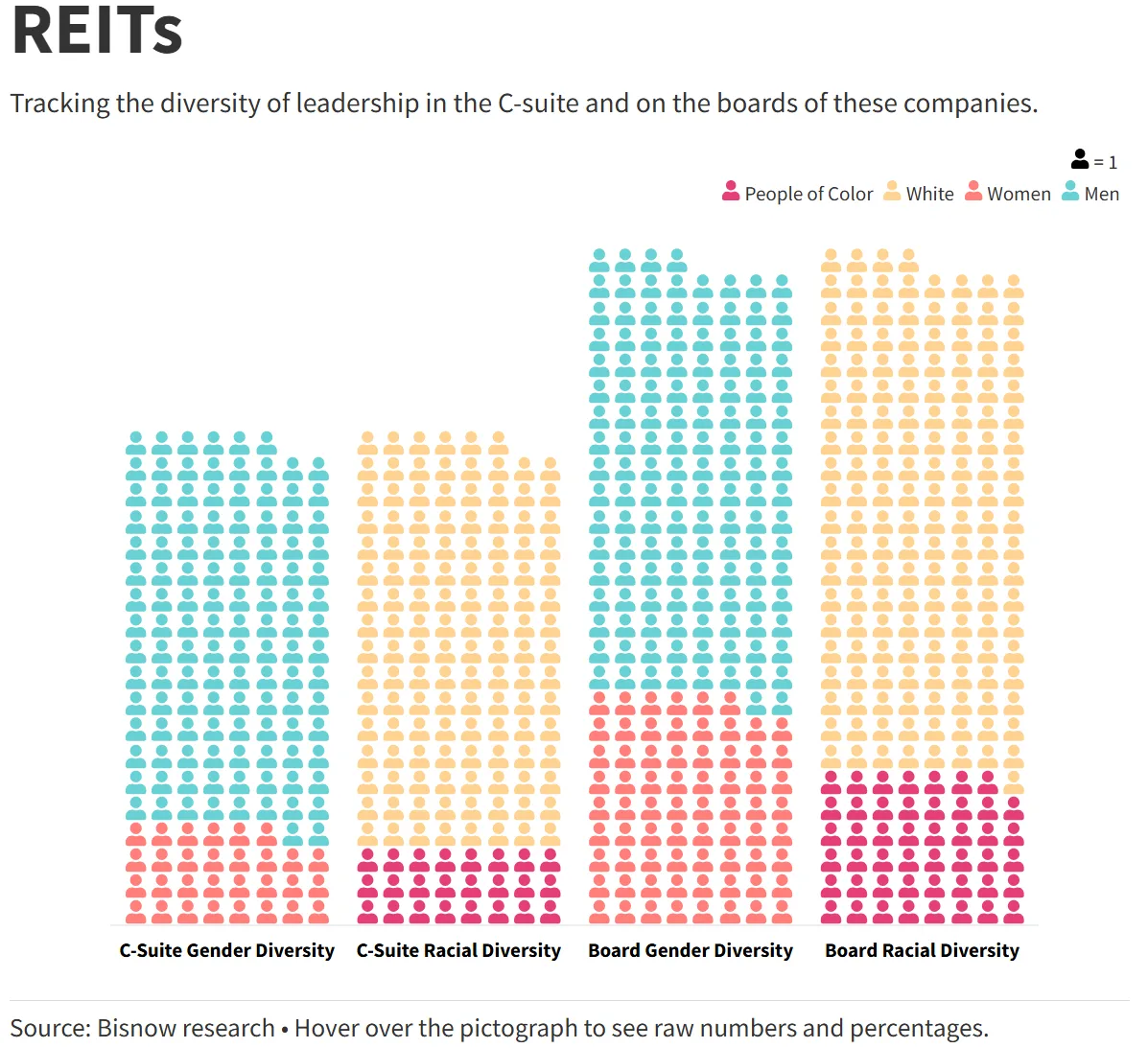- Women now hold 27.5% of C-suite roles and 32.9% of board seats at the 100 largest CRE firms, while people of color occupy 14.8% of C-suites and 20.8% of board seats—both up slightly from last year.
- People of color hold 22.1% of C-suite roles in lending firms, while brokerages lead in gender diversity with women making up 34.9% of executive roles.
- Companies are scrubbing DEI from official materials and job titles, but many continue to push for internal diversity and inclusion initiatives under different labels.

Progress Under Pressure
Despite a political climate increasingly hostile to DEI initiatives—especially under the current Trump administration—Bisnow’s sixth annual DEI Data Series reveals that leadership diversity in commercial real estate (CRE) continues its slow march forward. Across the 100 largest firms surveyed, women and people of color saw modest gains in both C-suite and board representation for the fifth straight year.
Who’s Leading the Charge
The data shows uneven progress across CRE’s various sectors:
- Lenders posted the highest racial diversity in the C-suite (22.1%) and added three new female CEOs in the past year.
- Brokerages like CBRE, JLL, and Cushman & Wakefield led in gender diversity (34.9% of C-suites), but racial diversity slipped slightly to 11.4%.
- REITs saw the biggest year-over-year increase in racial representation in the C-suite, up to 16%, although gender representation declined to 20%.
- Developers and investors made minimal gains, with people of color holding 12.6% of C-suite roles and women 24.9%, both nearly flat compared to last year.
The DEI Disappearing Act
Amid increasing scrutiny, many firms are rebranding or eliminating DEI-specific roles:
- At least eight brokerage firms analyzed no longer have a head of DEI.
- Cushman & Wakefield changed its chief DEI officer title to “Chief Impact Officer.”
- JLL’s global head of DEI became its head of “culture and employee experience.”
Despite these shifts, insiders say the internal goals remain the same—just under new labels.
Get Smarter about what matters in CRE
Stay ahead of trends in commercial real estate with CRE Daily – the free newsletter delivering everything you need to start your day in just 5-minutes
Representation Gaps Remain
- Only eight CEOs across the 100 companies are people of color.
- Just 10 CEOs are women.
- Women are disproportionately clustered in HR and marketing roles (65%), with fewer in senior leadership.
- People of color have a more even distribution across executive roles.
Even among gains, most companies fall well short of reflecting broader US demographics.
Lenders Show Signs of Change
While federal housing giants Fannie Mae and Freddie Mac lost several female leaders due to Trump administration interventions, the broader lending sector moved in the opposite direction:
- Three private lenders appointed female CEOs: Principal Financial Group, Santander, and US Bancorp.
- Female C-suite representation in lending rose to 31.1%.
- People of color in top lending roles rose to 22.1%.

Investment Firms Hold Steady
Top firms like BlackRock, KKR, and Greystar showed little change in executive diversity. Notable exceptions included:
- BGO and KKR continue to be led by people of color.
- Hines remains the only development firm with a female CEO.
Company restructurings, like Ivanhoé Cambridge’s rebranding to La Caisse, sometimes led to bigger C-suites—but not necessarily more diversity.
The REIT Landscape
Among the 20 REITs examined:
- People of color now hold 16% of C-suite roles.
- Female board representation rose to 34.3%, but C-suite representation fell to 20%.
- Equinix, the largest REIT by market cap, stands out for diversity with a C-suite that includes five people of color and four women.
Still, upcoming leadership changes—like Prologis CEO Hamid Moghadam’s retirement—threaten to reverse gains.

Why It Matters
Even amid backlash, commercial real estate firms appear to be making calculated decisions to preserve internal diversity efforts. The DEI label may be gone, but the goals—diverse, resilient, and high-performing teams—remain part of the business strategy.
“Changing a term that you know is a trigger word… but doing the work regardless is a business decision,” said Mandi Wedin, founder of the CRE DEI Advisory Board.
What’s Next
As the political fight over DEI intensifies, the CRE industry seems poised to continue its gradual evolution—perhaps under different language, but with representation still on the rise. With Parts 2 and 3 of Bisnow’s DEI Data Series on the way, further insights into how firms are adapting will soon follow.

















